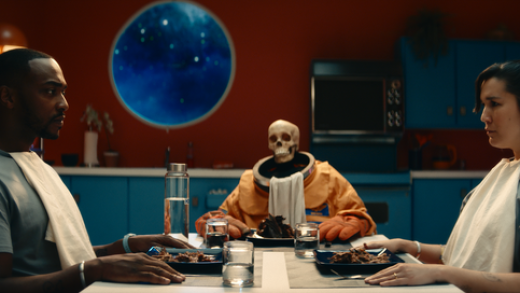In December 2019, I wrote a piece chronicling the history of the debate “how many books should I read at once?” By all indications, the zeitgeist pointed to “several books at a time” — Google search results agreed, I agreed, and others probably agreed. 2019 was a simple time: a time wherein one could hold multiple thoughts inside one’s head at the same time, which was conducive to juggling multiple plot lines at once. I concluded the piece by saying that “…if the winds of historical precedent tell us anything, we might reasonably predict that the tides are turning towards a consensus of ‘one book at a time’ within the next, oh, two hundred years or so.”
Now listen, you might say that I was wildly off re: the winds and the tides. They turned, in fact, over the next four months. I would say: in the grand scheme of the universe, my 199 year and 8 months miscalculation is a mere fart. Future “how many books should I read at once” scholars may well look back at me as the patron saint of prediction, given my relative “nailing it.”
On approximately March 13, 2020, our reading focus became instantly singular. We read the news, Twitter, Johns Hopkins COVID Map, or Anthony Fauci’s facial expressions. Our brains all tuned to the same frequency and stayed there for quite some time. For some of us, refreshing trumped real reading, and books fell completely off of our radar. For those who kept reaching for books, tastes became more specific — genre fiction, books about literal solitude, and books that might prepare us for the worst, e.g. Station Eleven and Severance, all had a bit of a heyday. By May, however, the amount of time spent reading skyrocketed for all but about 10% of adults (the percentage, I assume, of adults who are essential to the operation of society).
So let’s approach this like real scientists and identify some casual and unsubstantiated causal relationships. We spent more time reading, but the type of reading we did became more specific. We were no longer interested in hopping from literary intrigue in the morning to fast-paced thriller at night. The pandemic affected our ability to focus, and task-switching (book-switching) is mentally costly. We wanted books that immediately grabbed our attention (hence: thrillers) and we didn’t want to bounce between them like carefree birds who weren’t facing a physical and existential threat. We had one nest to sit in and keep watch over and we needed to be diligent. It is puzzling to me personally how often that one nest-book was pandemic fiction, but the point is clear: our focus narrowed. We could only handle TikTok videos or one attention-grabbing book at a time.
One of the major factors in this debate, pre-pandemic, was the idea of book FOMO. Can you afford to read only one book at a time, given how many Great Books ™ are being written or conceived of constantly? It tracks (again, scientifically-speaking) that as our social FOMO quieted, so too did our reading FOMO. No longer were we sitting at bars with our snobbish friends constantly asking us whether we’d read Infinite Jest yet. Instead, another side of book FOMO emerged, the question of: are you missing out on what you already have? Are you getting the most out of lockdown by squeezing the so-called juice of what is right in front of your face? Are you neglecting the book you’re currently reading by thinking about all of the other books out there?
Never, before 2020, has the “how many books at once?” zeitgeist changed so fast. Normally, the tides of technology, travel, and culture all need to rise together to create a gradual sea level change. And yet, this sudden shift may have unforeseen staying power. As the world starts to open up, many of us are realizing that we actually kind of liked certain things about lockdown. Some of us realized how much we valued quiet nights at home, some appreciated the break from social obligation, and, most significantly: some of us realized that reading multiple books at once just means enjoying each book a little bit less. We quieted our lives, calendars, and TBR piles; patience and attention overtook abundance.
In the same way that lockdown forced people to slow down and consider who and what really mattered to them, people stopped to consider what reading material really mattered to them and learned to spend more quality time with that material. Quality Time, as we all know from The 5 Love Languages, is not time spent thinking about other books, but time spent focusing on the object of your attention. How can you spend QT with Parakeet if you’re lingering on whodunit in an Agatha Christie? How can you embrace Girl, Woman, Other if you’re busy wondering where Bernadette went? Quality has trumped quantity, and if you’re still furiously trying to crank out books like an Amazon warehouse in December, you’re doing it wrong. Your brain has limited capacity, and it will thank you when you allow it to linger on a really good sentence or a terrific metaphor, like the one about nests I used earlier.
We are living through uncertain times and, speaking for myself and probably millions of others, when I’ve tried to jump between multiple books these days I am completely undone by the emotional whiplash. IS NOTHING IN THIS WORLD STABLE? And, in fact, I find I’m much better able to escape reality when I am fully immersed in one book than when juggling multiple. You might say that I am a traitor to the “multiple books at once” team, but I would just say that I am capable of change. And in fact, I don’t remember that person who wrote those things in 2019 at all.













